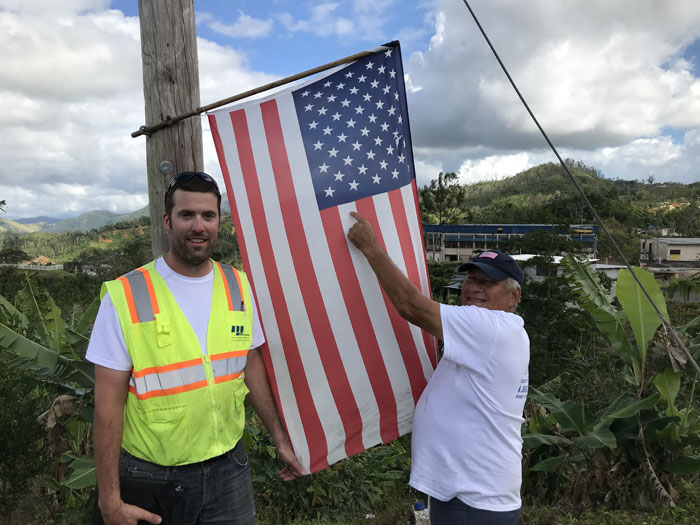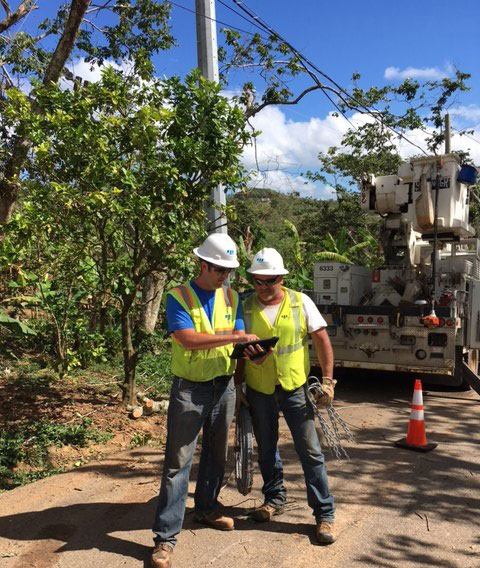From the Puerto Rico response team: Q&A with engineer Aaron Nelson
Feb 9, 2018
Aaron Nelson, engineer II, is part of Minnesota Power and Superior Water, Light and Power’s team assisting with power restoration in Puerto Rico. The team arrived in Puerto Rico on Jan. 20 and is part of an industry-wide effort to aid the island hit hard by Hurricane Maria last fall. The team is staying in Mayaguez on the western side of the island and working in the mountains around Maricao. Nelson answered a few questions about his experiences so far.
- Why did you sign up to help in the restoration effort?
I signed up for this mission out of compassion for the people of Puerto Rico. I remember what it was like not having power for a week in the July 2016 storm, and it's hard to imagine having to deal with no power for four-plus months.
- What were your first impressions after arriving on the island?
WOW, these people are resilient! I did not expect things to seem so “business as usual” this soon after a devastating hurricane.
- Please describe the daily routine. What type of work are you doing?
We start work at 5:30 a.m., leave the staging area about 7 a.m. and get up to the job site by 9:30 a.m. We work until about 6 p.m. and generally get back to the hotel by 9 p.m. (travel time, dinner, etc). I support the crews by helping to plan out work a few days or a week in advance with Line Supervisor Dean Erdman and then each morning, I ride up with the crews and help talk through the work planned for that day with Mike Stingle (area operations lead lineman for this trip). I also help the crews with any engineering-related questions (transformer size, pole size, wire size, etc.)
- What has been the biggest challenge so far?
The terrain. It is unlike anything any of us have ever worked on. It's quite common to have multiple spans between 500 and 1,500 feet (spanning peak to peak) and when the wire is broken somewhere in the middle, the only option is to walk (or cut) through the jungle and find the wire, which, at times, may be located at least 100 feet below the pole.
- Please describe the area where you are working. How have the residents been coping without power?
We are working up in the mountains about 12 miles east of Maricao (about 30 miles east of Mayaguez) around 3,000 feet elevation. Not too high in comparison to the Rockies, but there are way more peaks and valleys with the roads carved into the hillsides.
There are many generators running, especially at night. Most of the people have cellphones and cars, so if they don't have a generator they use their car to charge a cellphone battery.
- What does your spouse think about you being gone this long?
Amber (a PMO master scheduler at Minnesota Power) encouraged me to go help the people of Puerto Rico because we both saw it as an opportunity to serve others in need. Being away from my family is a very small inconvenience compared to what these people have had to deal with over the last several months.




